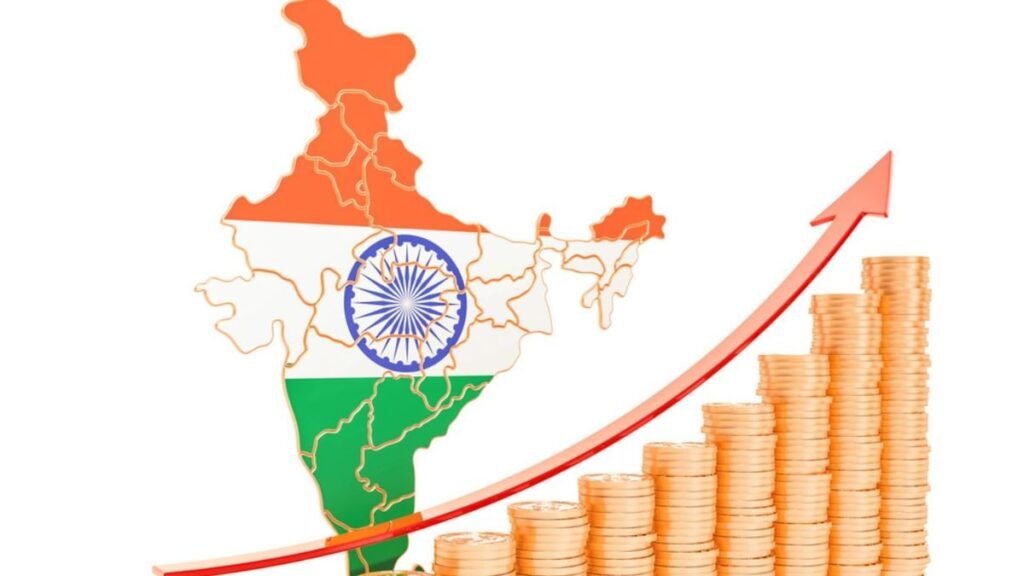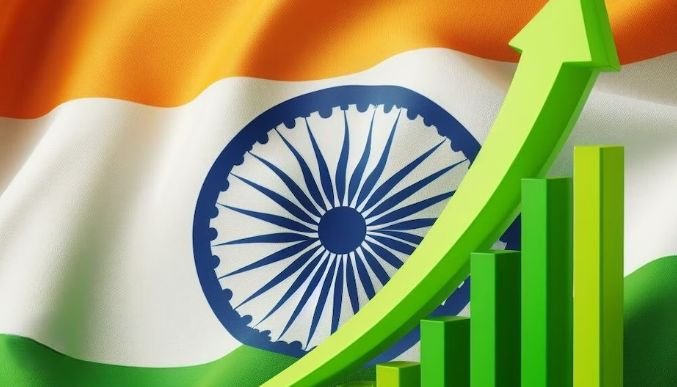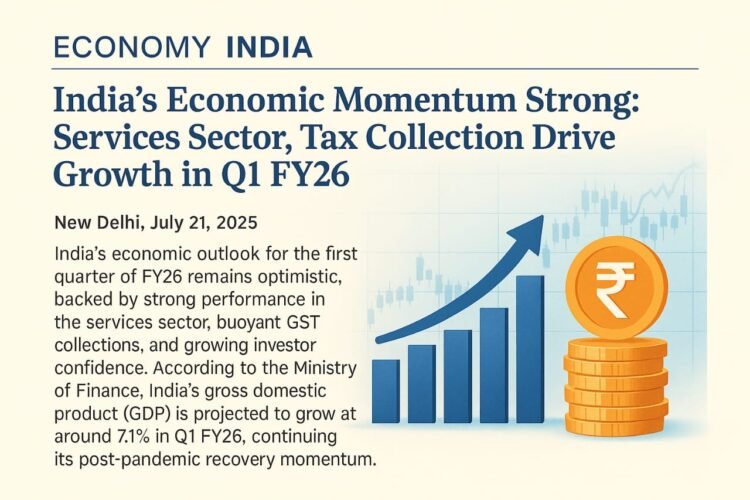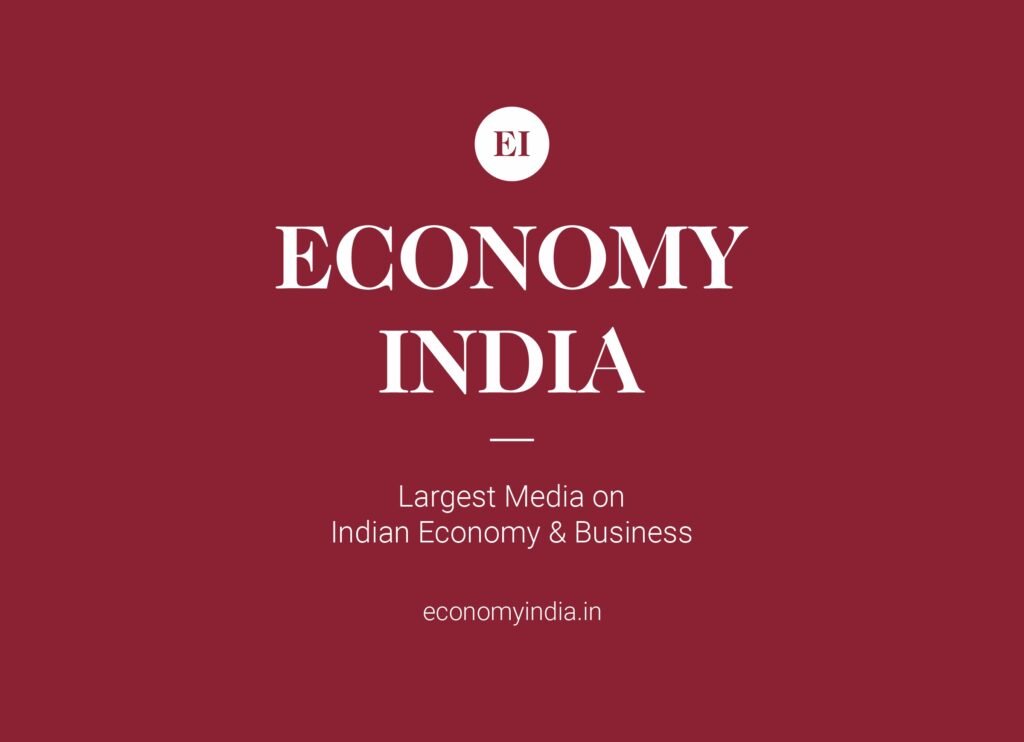Robust GST collections, high foreign exchange reserves, and resilient service sector point to a stable economic trajectory for India
NEW DELHI (Ecnomy India): India’s economic outlook for the first quarter of FY26 remains optimistic, backed by strong performance in the services sector, buoyant GST collections, and growing investor confidence. According to the Ministry of Finance, India’s gross domestic product (GDP) is projected to grow at around 7.1% in Q1 FY26, continuing its post-pandemic recovery momentum.
Strong Tax Collections Boost Fiscal Health
The government recorded a 19% year-on-year rise in Goods and Services Tax (GST) collections for June 2025, amounting to Rs1.89 lakh crore. This is the third consecutive month where collections crossed Rs1.8 lakh crore, indicating a healthy consumption pattern and improved compliance.
> “The buoyant GST revenues reflect India’s broad-based recovery and the success of technology-driven compliance systems,” said Revenue Secretary Sanjay Malhotra.

Services Sector Leads Growth
India’s services sector, including IT, financial services, and hospitality, has shown impressive double-digit growth, driven by both domestic demand and global outsourcing. The Purchasing Managers’ Index (PMI) for services stood at 58.2 in June, signaling expansion and positive business sentiment.
The tourism and aviation sectors also reported higher footfalls and booking rates, particularly during the summer season.
Forex Reserves at Record High
The Reserve Bank of India (RBI) reported that India’s foreign exchange reserves touched $671 billion, the highest ever. This provides a cushion against global market volatility and strengthens the rupee, which has remained relatively stable against the US dollar.
Manufacturing Faces Mixed Trends
While overall industrial production remains positive, the manufacturing sector experienced moderate growth of 4.2% in May 2025. Experts attribute this to weak external demand and ongoing supply chain constraints. However, the capital goods segment showed a healthy uptick, suggesting revival in private investment.
Rural Demand a Key Monitorable
One area of concern remains rural demand, which has shown signs of uneven recovery due to erratic monsoons and lower wage growth. The government is expected to ramp up support through MNREGA and direct benefit schemes ahead of the festival season.
Global Confidence in India
India continues to remain an attractive investment destination. FDI inflows touched $18.6 billion in Q1 FY26, with key investments in renewable energy, semiconductors, and digital infrastructure.
Global rating agency S&P maintained India’s BBB- rating with stable outlook, citing policy stability, high growth potential, and strong foreign exchange buffers.

Inflation Under Control
Retail inflation for June eased to 4.8%, within the RBI’s comfort zone, due to softening food prices and effective monetary policies. Core inflation remains stable, giving the central bank room to support growth.
Looking Ahead
With the Union Budget for FY26 around the corner, economists expect continued focus on capital expenditure, rural welfare, and manufacturing incentives. Experts believe India is on track to emerge as the world’s third-largest economy by 2027, provided structural reforms continue and global headwinds remain manageable.
(Economy India)













